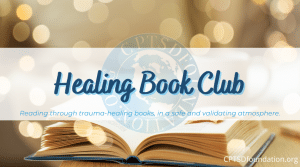Post-traumatic stress disorder (PTSD) has become well-known among the public today. However, many do not understand that anyone can form PTSD and ignore the symptoms putting themselves at risk for health and emotional problems.
June is post-traumatic stress disorder awareness month, so it seemed an excellent opportunity to write about this acquired disorder in depth. This article will cover a description of what PTSD is and its history as an accepted diagnosis.
What is Post-Traumatic Stress Disorder?
During a scary and/or dangerous event, it is natural to feel fear. Our fright sets off a cascade of chemical reactions in the brain that readies our bodies; this is called the fight/flee/freeze response. After the danger or scary event (trauma) has passed, most people’s bodies and brains will return to baseline, allowing them to calm down both physically and psychologically. All people who are exposed to trauma have PTSD symptoms for a short while.
However, some people exposed to trauma do not recover naturally and remain fearful and stressed even though they are no longer in danger. These people are diagnosed with post-traumatic stress disorder.
Scary and dangerous events aren’t the only causes of PTSD. Other experiences that can cause the disorder are traumas like the sudden loss of a loved one. Symptoms usually begin within three months of the trauma, but some develop post-traumatic stress disorder years after the event.
The symptoms of PTSD

PTSD is diagnosed by a mental health professional. The symptoms of PTSD last more than a month and are severe enough to interfere with the survivor’s life at work and in their relationships. The length of the illness varies, with some recovering within six months and others develop chronic post-traumatic stress disorder.
There are four categories of symptoms for PTSD listed in the Diagnostic and Statistical Manual, edition five (DSM-5), and an adult must have all the following for at least one month.
- At least one re-experiencing symptoms
- At least one avoidance symptom
- At least two arousal and reactivity symptoms
- At least two cognition and mood symptoms
These four categories can be further broken down as follows:
Re-experiencing symptoms:
- Flashbacks
- Bad dreams
- Frightening thoughts
Re-experiencing symptoms cause problems with a person’s daily routine and start from the person’s own thoughts and feelings. Words and objects that remind the person of the traumatic event might also trigger re-experiencing symptoms.
Avoidance symptoms:
- Avoiding thoughts or feelings related to the traumatic event
- Staying away from anything that reminds the person of the traumatic event
Anything the reminds the person of their traumatic event is a trigger that can cause avoidance symptoms. Symptoms may cause a person to change their routine and interferes with their lives.
Arousal and reactivity symptoms:
- Feeling tense
- Being easily startled
- Having difficulty sleeping
- Having angry outbursts
Unfortunately, arousal symptoms never ease instead of as a short response to trauma. An arousal and reactivity symptom may arise from anything that reminds the survivor of the traumatic event. The symptoms of arousal and reactivity make the person feel angry and stressed and make it hard to carry out daily tasks.
Cognition and Mood Symptoms:
- Negative thoughts about oneself or the world
- Trouble remembering the traumatic event’s key features
- Distorted feelings such as guilt or blame
- A loss of interest in enjoyable activities
These symptoms begin or worsen after the trauma but are not due to injury or substance abuse. Cognition and mood symptoms make the person feel detached and alienated from family members and friends.
Who Forms PTSD?
Not everyone who experiences trauma develops post-traumatic stress disorder. Indeed, most people will not. Many factors play a part in whether a person will develop PTSD. These risk factors include:
- Living through or witnessing a dangerous event
- Being injured
- Witnessing another person being injured
- Seeing a dead body
- Childhood trauma
- Feeling helpless, horror, or extreme fear
- Having no social support after the traumatic event
- Dealing with a loss after the event, such as the death of a loved one
Obviously, anyone can develop PTSD; no matter what demographic you live in, we are all vulnerable. Researchers continue to study the development of PTSD and resilience factors, such as genetics and neurobiology.
The History of Post-Traumatic Stress Disorder

Although PTSD is commonly known to the public and the mental health system, it was not always so. Josef Leopold, an Austrian doctor in 1761, wrote about what he called “nostalgia” that he noticed among military personnel exposed to war trauma.
The men Leopold observed were experiencing problems with homesickness, sleep problems, and deep emotional sadness.
During the United States Civil War, Dr Leopold’s model of post-traumatic stress disorder helped physicians understand what they were observing among men fighting on both the north and the south. These doctors decided that the cause of nostalgia was physical injury.
Doctor Mendez da Costa, a United States physician who studied civil war soldiers, determined that the racing hearts, breathing, and pulse were markers of the heart and described it as being overstimulated. This syndrome became known as Da Costa’s Syndrome, and the men of the Civil War began to receive drugs to help control their symptoms and then were returned to the battlefield.
In 1919, soon after World War I, the official fighting had ended, but for many men, it continued for years, having returned with them to their homes from the battlefields of Europe. By this time, the disorder was known as shell shock and got its name because doctors believed the observed reactions to war resulted from the explosion of artillery shells.
The doctors of the time observed what Josef Leopold had two centuries prior of panic and sleep problems. The doctors determined that the damage that was causing the symptoms they observed was hidden in the brain caused by the impact of the firing noise of big weapons.
However, they were puzzled by the men who had not been exposed to explosions and yet exhibited the same symptoms as shell shock. These men were given the diagnosis of war neuroses. These men were given a few day’s rests and sent back into battle.

During World War II, the diagnosis of war neuroses and shell shock took on a different name, combat stress reaction, aka battle fatigue. Military leaders, such as Lieutenant General George S. Patton, did not believe in battle fatigue, believing the injured men were faking their illness to avoid battle and oppressed his men.
Despite the doubters in the military, nearly half of all World War II military discharges were given on the existence of battle fatigue.
Despite the pressure of the military leadership to help the soldiers of World War II back into battle, doctors began focusing on preventing battle fatigue and finding new ways to treat it.
It wasn’t until 1980 that battle fatigue was named post-traumatic stress disorder and was listed in the American Psychological Association’s publication the Diagnostic and Statistical Manual edition three (DSM-III). Today about 7.7 million adults in the United States have PTSD, but these are only those diagnosed with it. There are probably millions more.
The Future of PTSD
Post-traumatic stress disorder can affect anyone and does not discriminate. PTSD affects people of all ages, backgrounds, income levels, and races. PTSD can form in soldiers and civilians alike from a single and sudden trauma or a series of traumatic experiences.
Approximately 6 of every 10 men and 5 of every 10 women will experience a traumatic event, and an estimated 7-8% will form PTSD at some point in their lives. That statistic adds up to approximately 8 million adults per year.
Research continues to find new ways to treat PTSD. Hopefully, they can find a method to prevent it from forming. If reached early, people who have been traumatized can receive the treatment they need even after a severe traumatic event such as a natural disaster like a tornado and avoid the depth of the despair caused by PTSD.
In 2010, Congress designated June 27 as National PTSD Awareness Day and June is PTSD Awareness Month. It is vital to make people aware of post-traumatic stress disorder to recognize its formation and stop the stigma attached to seeing a mental health professional for this life-altering condition.
“Trauma is personal. It does not disappear if it is not validated. When it is ignored or invalidated the silent screams continue internally heard only by the one held captive. When someone enters the pain and hears the screams, healing can begin.” ~ Danielle Bernock
Reference
Crocq, M. A., & Crocq, L. (2000). From shell shock and war neurosis to post-traumatic stress disorder: a history of psychotraumatology. Dialogues in clinical neuroscience, 2(1), 47.

If you or a loved one live in the despair and isolation that comes with complex post-traumatic stress disorder, please, come to us for help. CPTSD Foundation offers a wide range of services, including:
- Daily Calls
- The Healing Book Club
- Support Groups
- Our Blog
- The Trauma-Informed Newsletter
- Daily Encouragement Texts
All our services are reasonably priced, and some are even free. So, to gain more insight into how complex post-traumatic stress disorder is altering your life and how you can overcome it, sign-up; we will be glad to help you. If you cannot afford to pay, go to www.cptsdfoundation.org/scholarship to apply for aid. We only wish to serve you.


My name is Shirley Davis and I am a freelance writer with over 40-years- experience writing short stories and poetry. Living as I do among the corn and bean fields of Illinois (USA), working from home using the Internet has become the best way to communicate with the world. My interests are wide and varied. I love any kind of science and read several research papers per week to satisfy my curiosity. I have earned an Associate Degree in Psychology and enjoy writing books on the subjects that most interest me.




It is important to recognize that PTSD may occur in children who are and adults who have been abused or neglected, but there are many who do not satisfy psychiatry’s DSM criteria. The effects of child abuse trauma deserve and must have a diagnostic category of its own.
See our article in MOLECULAR PSYCHIATRY Published this month: “Recognizing the importance of childhood maltreatment as a critical factor in psychiatric diagnoses, treatment, research, prevention, and education by Martin H. Teicher, Jeoffry B. Gordon and Charles B. Nemeroff.✉